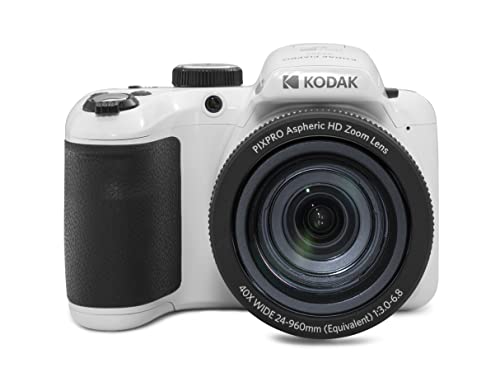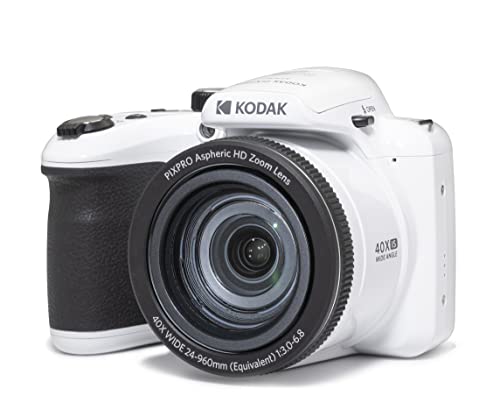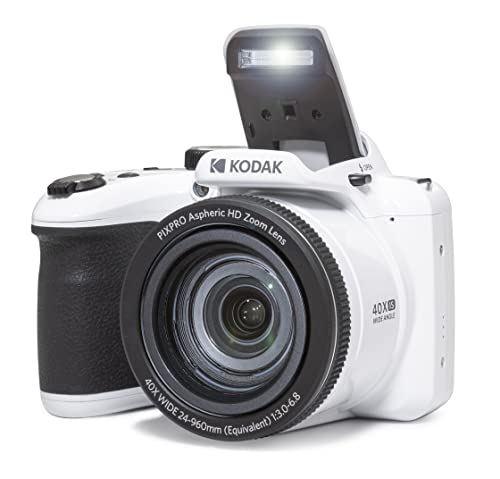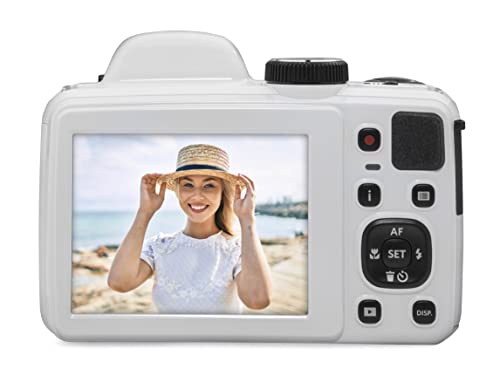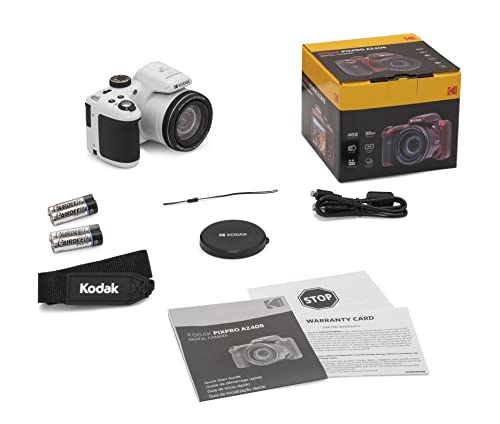



When it comes to capturing stunning images with your digital camera, one of the key factors to consider is the image size. The image size directly impacts the quality and resolution of the photos you take, so it’s important to choose the right settings to achieve the desired results.
As a photography enthusiast, I often find myself experimenting with different image sizes to see how they affect the final outcome of my photos. Whether I’m looking to print large posters or share images online, selecting the optimal image size is crucial for achieving the best possible results.
In this article, I’ll delve into the importance of selecting the best image size for your digital camera and provide some tips on how to choose the right settings for various photography purposes. Let’s explore how image size can make a difference in the quality of your photographs and help you capture stunning images that truly stand out.
Choosing the Best Image Size for Your Digital Camera
When selecting the image size for your digital camera, it is essential to consider the intended use of the photos you will be taking. Larger image sizes are ideal for printing high-quality photographs or for editing and cropping without losing detail. On the other hand, smaller image sizes are suitable for sharing on social media platforms or emailing, as they take up less storage space and load faster online.
For professional photographers or those looking to create large prints, opting for the highest image size available on your camera is recommended. This ensures that you capture all the details and have flexibility in post-processing. However, if you are primarily sharing photos digitally or posting on social media, a medium to small image size may be more practical.
Factors to Consider when Choosing Image Size:
- Intended Use: Consider how you plan to use the photos – printing, sharing online, or archiving.
- Storage Space: Larger image sizes take up more storage space on your memory card and computer.
- Resolution: Higher image sizes offer better resolution and detail for printing or editing.
- Speed: Smaller image sizes load faster online and are easier to share via email or social media.
Understanding Image Sizes
In the world of digital photography, it’s essential to understand the concept of image sizes. When capturing images with a digital camera, the size of the image is determined by the number of pixels it contains. The more pixels an image has, the higher its resolution and quality.
When discussing image sizes, it’s crucial to consider both the dimensions of the image (width and height) and the file size. The dimensions of an image are typically measured in pixels, with larger dimensions resulting in a higher resolution image. File size, on the other hand, refers to the amount of storage space the image file occupies on a device.
- Resolution: Refers to the clarity and detail of an image. Higher resolution images have more pixels, resulting in sharper and more detailed pictures.
- File Size: Determines the amount of storage space an image file requires. Larger file sizes are necessary for high-resolution images but may take up more storage space.
- Aspect Ratio: Describes the proportional relationship between an image’s width and height. Different aspect ratios can affect how an image appears on various devices.
Factors to Consider
When choosing the best image size for a digital camera, several factors come into play. Firstly, consider the resolution of the camera sensor. A higher resolution sensor will allow you to capture more detail in your images, resulting in higher quality photos. However, a higher resolution sensor also means larger file sizes, which may take up more storage space on your memory card.
Another factor to consider is the intended use of the photos. If you plan to print your images at a large size or use them for professional purposes, you may want to opt for a higher resolution setting to ensure the highest quality output. On the other hand, if you primarily share your photos online or view them on a computer screen, a lower resolution may be sufficient.
- Megapixels: The number of megapixels a camera has will directly affect the image size and quality. Higher megapixel counts generally result in larger, more detailed images.
- File Format: Consider the file format you want to shoot in, as some formats, like RAW, will produce larger files than JPEG. RAW files contain more data and allow for more flexibility in post-processing.
- Storage Capacity: Make sure to have enough storage space on your memory card or hard drive to accommodate the larger file sizes that may come with higher resolution settings.
Recommended Image Sizes
When it comes to capturing high-quality images with a digital camera, it’s important to consider the recommended image sizes. Optimal image sizes ensure that your photos are sharp, detailed, and vibrant, making them perfect for printing or sharing on social media.
For professional photographers or enthusiasts looking to create large prints or display images on high-resolution screens, it’s advisable to shoot in RAW format or at least in the highest resolution available on your camera to preserve all the details and allow for post-processing flexibility.
Standard Image Sizes:
- For general use and sharing on social media, images between 2-5 megapixels are sufficient.
- For high-quality prints up to 8×10 inches, aim for images around 8-12 megapixels.
- For large prints or professional use, consider shooting at 20+ megapixels for maximum detail and flexibility.
Benefits of Optimal Image Size for Digital Cameras
When it comes to capturing images with a digital camera, using the right image size can have a significant impact on the quality of your photos. Optimal image size ensures that your pictures are sharp, detailed, and vibrant, enhancing the overall visual appeal of your photography.
Choosing the appropriate image size for your digital camera not only improves the clarity and resolution of your photos but also allows for greater flexibility in editing and post-processing. By capturing images in the right size, you can crop, resize, and manipulate your photos without losing quality, giving you more creative control over your work.
- Enhanced Detail: Optimal image size preserves the fine details and textures in your photos, resulting in sharper and more realistic images.
- Improved Editing: Using the right image size enables you to make precise edits and enhancements to your photos without compromising quality.
- Efficient Storage: By capturing images in the optimal size, you can save storage space on your device or memory card while maintaining high image quality.
- Professional Results: Choosing the right image size for your digital camera helps you achieve professional-looking photos that stand out and make an impact.
Common Image Size Options
When it comes to digital photography, there are several common options for image sizes that you can choose from based on your needs and preferences. Here are some of the most popular ones:
- Full Resolution: This option captures the highest quality image your camera is capable of, resulting in large file sizes perfect for printing or detailed editing.
- Large: A slightly compressed version of the full resolution image, ideal for sharing online or printing in standard sizes without losing much detail.
- Medium: A smaller size that strikes a balance between quality and file size, suitable for online sharing, social media, and basic prints.
- Small: The smallest image size option, great for quick sharing on messaging apps, email, or social media posts where file size matters.
Image Size for Different Types of Photography
When it comes to capturing images for different types of photography, the ideal image size can vary based on the specific requirements of the genre. As a photographer, understanding the optimal image size for various types of photography can help you achieve the best results and meet the expectations of your clients.
For portrait photography, where the focus is on capturing the essence of the subject, a medium to high image resolution is recommended. This allows for detailed facial features and expressions to be captured with clarity. A resolution of at least 10 megapixels is often sufficient for portrait photography.
Landscape Photography
- For landscape photography, where the goal is to capture vast scenic views and intricate details, a high image resolution is crucial. A resolution of 20 megapixels or higher is recommended to ensure that the intricate textures and elements of the landscape are captured in stunning clarity.
Editing and Resizing Images
After capturing images with your digital camera, it is essential to edit and resize them to enhance their quality and optimize their size for different purposes. Here are some key points to consider when editing and resizing images:
- Editing: Use photo editing software like Adobe Photoshop or GIMP to adjust the brightness, contrast, saturation, and sharpness of your images. You can also crop, rotate, and remove imperfections to improve the overall composition.
- Resizing: Resize your images based on their intended use. For web sharing, smaller file sizes are ideal to reduce loading times. For printing, higher resolution images are necessary to maintain quality. Always save a copy of the original image before resizing to avoid loss of quality.
Remember to consider the aspect ratio of your images when resizing to prevent distortion. Experiment with different editing techniques to find the best adjustments for your photos. By editing and resizing your images effectively, you can showcase your photography skills and create stunning visuals for various platforms.
Best image size for digital camera
Features
| Part Number | DC101 |
| Model | DC101 |
| Warranty | 1 |
| Color | Black |
Features
| Part Number | 26837074 |
| Is Adult Product | |
| Edition | 1 |
| Language | English |
| Number Of Pages | 400 |
| Publication Date | 2018-01-09T00:00:01Z |
| Format | Illustrated |
Features
| Part Number | BM-LENSKIT58MM-CNSLR |
| Model | 58MM FILTERS |
| Size | Ulra Deluxe Combo |
Features
| Part Number | 4K Digital Camera |
| Model | 4K Digital Camera |
| Warranty | 1 Year Warranty |
| Color | Black |
| Is Adult Product | |
| Size | Compact |
Features
| Part Number | 04200228 |
| Model | DC080 |
| Warranty | 1 year |
| Color | Black |
| Size | ultra-compact |
Features
| Model | W08 |
| Color | YL15-W08-C-Black |
| Is Adult Product |
Features
| Part Number | AZ405-WH |
| Model | AZ405-WH |
| Warranty | 1 year manufacturer |
| Color | White |
| Release Date | 2022-11-05T00:00:01Z |
| Language | English |
Features
| Model | ESDPSP2023ULMLAZ |
| Release Date | 2022-08-03T00:00:01Z |
| Edition | Ultimate |
| Format | Download |
Q&A:
What is the best image size for a digital camera?
The best image size for a digital camera depends on your specific needs. For most casual photographers, shooting in a resolution of around 12-24 megapixels is sufficient for printing quality photos and sharing online.
Does a higher megapixel count always mean better image quality?
Not necessarily. While a higher megapixel count can allow for more detailed images, factors like the quality of the camera sensor, lens, and image processing also play a significant role in determining image quality.
What are the advantages of shooting in RAW format with a digital camera?
Shooting in RAW format allows for more flexibility in post-processing as it retains all the original data captured by the camera sensor. This can be especially useful for adjusting exposure, white balance, and other settings without losing image quality.
How can I determine the best image size for my digital camera?
To determine the best image size for your digital camera, consider factors like your intended use (print, online, etc.), the resolution of the camera sensor, and the available storage space. Experimenting with different settings and reviewing the results can help you find the optimal image size for your needs.







































